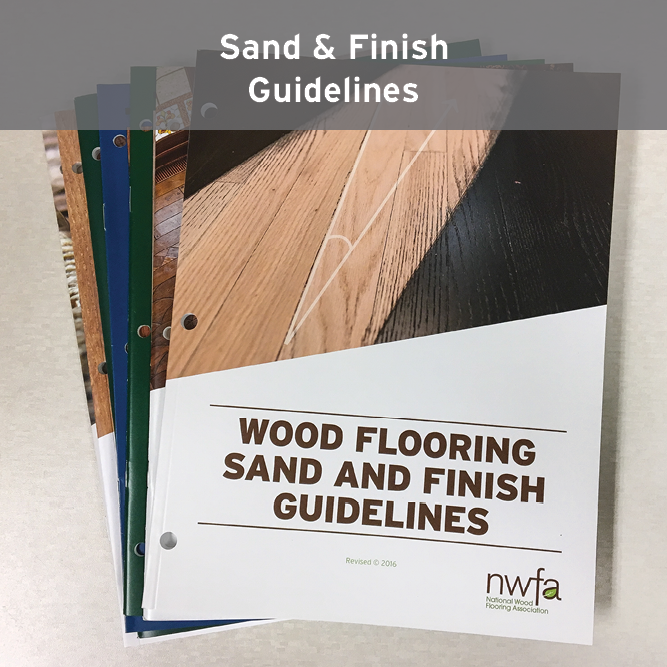The Right Wood Floor Adhesive for the Right Job

Understanding the range of wood adhesives currently available is critical to select the right adhesive for the right job.
Photo: Fishman Flooring Solutions.
The number of wood flooring adhesive technologies continues to grow in the marketplace at a time when wood flooring installations are on the rise. This places a burden on flooring installation contractors to understand the range of wood adhesives currently available to them in order to select the right adhesive for the right job. Making the proper adhesive selection hinges on the following four key considerations.
One: Degree of Moisture in the Slab
All concrete, regardless of age or grade level, contains a certain degree of moisture that must be taken into account before the installation of wood flooring begins. Adhesive manufacturers universally recommend testing the slab for moisture before starting any installation. Once the level of moisture has been identified, many options are available.
For example, there are 3-in-1 adhesive and moisture protection systems available, such as Mapei ECO 985 and Mapei ECO 980, that address moisture, sound and bond issues. There are also urethane and modified silene adhesives, like Mapei ECO 977 and Mapei ECO 983 that, when combined with a primer like Mapei Planiseal PMB, provide a full moisture barrier effective on slabs with up to 100 percent relative humidity (Rh) and 25 lb. moisture vapor emission rates (MVER).
All successful wood floor installations must start with a clean, dry and level subfloor. While this might seem like common sense, it is not always the case, often resulting in unnecessary and potentially costly flooring failures.
Installers must determine answers to several questions with regard to the subfloor. Is it level? What are the moisture levels in the slab? Has the slab had time to cure? Are there any contaminants, such as sealer or adhesive residue, on the slab? Are there low spots, holes, voids and bumps in the floor that need to be corrected? If any of these issues are in play, they must be addressed before any wood flooring installation begins.
Two: The Timeframe for the Installation
The installer also needs to determine the timeframe for the installation. A slab typically needs to be cured for at least 28 days before wood flooring is installed on it. With fast-track construction projects, the curing time can be shortened to 14 days with the use of a moisture controlling wood adhesive, such as Mapei’s Ultrabond ECO 995. It is important to remember, however, that concrete is not dry in 28 days – it is only cured. Concrete dries at the rate of one month per one inch of thickness.
Three: The Type of Wood Being Installed
Determining the type of wood being installed is critically important, because one size does not fit all when it comes to types of wood and adhesives. Installing a solid wood floor requires the use of more advanced modified silene and urethane-based adhesives, such as Henry 1171N and Anchor Woodstick 1919. These products have great initial grab and hold trowel ridges, allowing for full contact between the wood and adhesive. And, because solid hardwood is sensitive to the environment and can easily contract and expand, the elasticity and flexibility provided by these adhesives are extremely important in preventing the wood from cracking.
Engineered wood can be installed using a less elastic adhesive because it is more resistant to fluctuations in temperature and humidity than solid wood and its multilayer construction prevents warping and bowing. This allows numerous acrylic, urethane and silene-based adhesives, such as Anchor 2002 and DriTac 6200, to be used with engineered wood, depending on site conditions and sound requirements.
If the wood to be installed is exotic, that becomes an important factor in the selection of an adhesive. Bamboo is a good example. It is extremely dense, hard and non-porous. Given these characteristics, silene-based adhesives, such as Wakol MS-260 or Mapei Ultrabond ECO 980, are good options for installing bamboo and other exotic woods.
Four: The Size of the Wood Plank
The flooring industry is continuing to produce larger wood flooring products. Wood planks, for example, are now available in widths of up to 14 inches. These larger planks require a modified silane adhesive, such as Wakol MS 290, to add dimensional stability to them.
Help is Available from Fishman
“Helping others,” it has been said, “is the way we help ourselves.” Nowhere is that truer than at Fishman Flooring Solutions. The company’s sales and technical teams are always available to help floor covering installers and others find answers to their questions about adhesives or any other flooring-related topics. Fishman can be reached at www.lfishman.com or by calling 1-800-556-7899.
Raw material shortages continue to hamper the ability of some adhesive manufacturers to meet marketplace demand. To address the issue, Fishman Flooring Solutions has added additional wood adhesive lines to its product portfolio. Equally important, Fishman has also ramped up communications with its customer base to help installers find solutions to wood adhesive stocking issues. There is, however, an important rule of thumb: the sooner that these discussions take place, the better the outcome in terms of product availability.
Looking for a reprint of this article?
From high-res PDFs to custom plaques, order your copy today!









